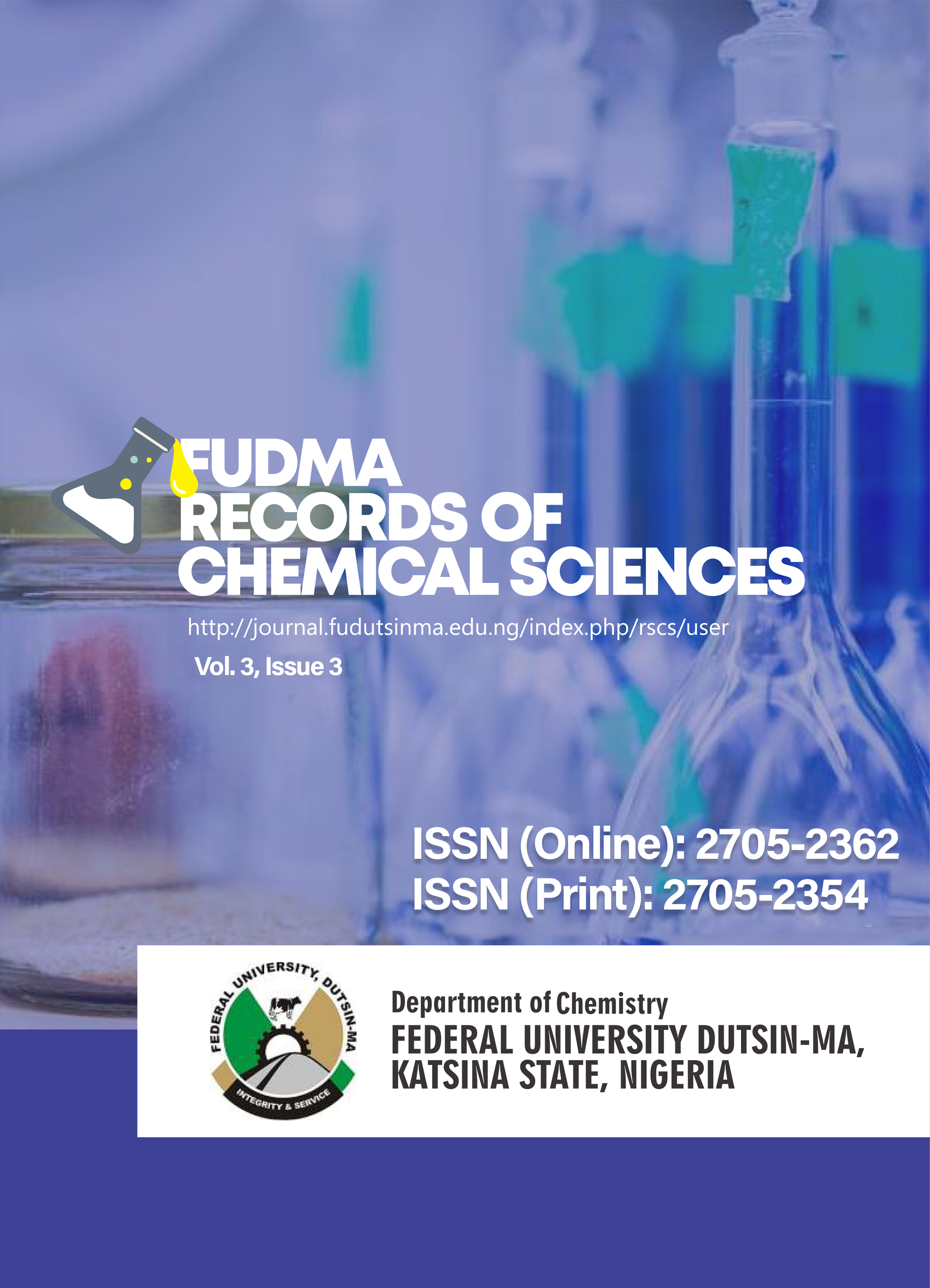Synthesis and Characterization of Magnetite (Fe3O4) Nanoparticles from Iron Sand as a Catalyst in Biodiesel production using waste cooking oil
DOI:
https://doi.org/10.33003/Keywords:
Magnetite, Haemetite, Biodiesel, Heterogeneous catalyst, recycleAbstract
Iron sand is a readily available natural material. This study involved the extraction of
magnetite (Fe3O4), an iron oxide material, from locally accessible iron sand. co-precipitation
method was employed using hydrochloric acid and ammonium hydroxide. The
characterization methods for the catalysts were XRD, SEM, FTIR, and Magnetic
susceptibility. From the XRD analysis, 76% of the sample appeared as hematite but changed
to magnetite (55%) when activated and 25% as hematite. Furthermore, the extracted Fe3O4
was used as a catalyst for producing biodiesel from waste cooking oil. The variables studied
were the catalyst loading (0.25-2.00 g) and duration of reaction (200 m). The results revealed
that all parameters influence the transesterification experiment for biodiesel production. FT
IR, basic back titration, and ASTM methods characterized the biodiesel produced.
Optimization of reaction parameters was performed, and a maximum yield of 97.3% was
obtained using the conditions of a 1.125 g catalyst load, a 6:1 methanol to oil ratio, 115
minutes of reaction time, and a reaction temperature of 65 °C. After one cycle of catalyst
regeneration, a 92% yield was obtained. Remarkably, a yield of 97.3% was obtained when the
transesterification reaction was carried out according to the model's recommended conditions,
which was in line with the model's predicted value






